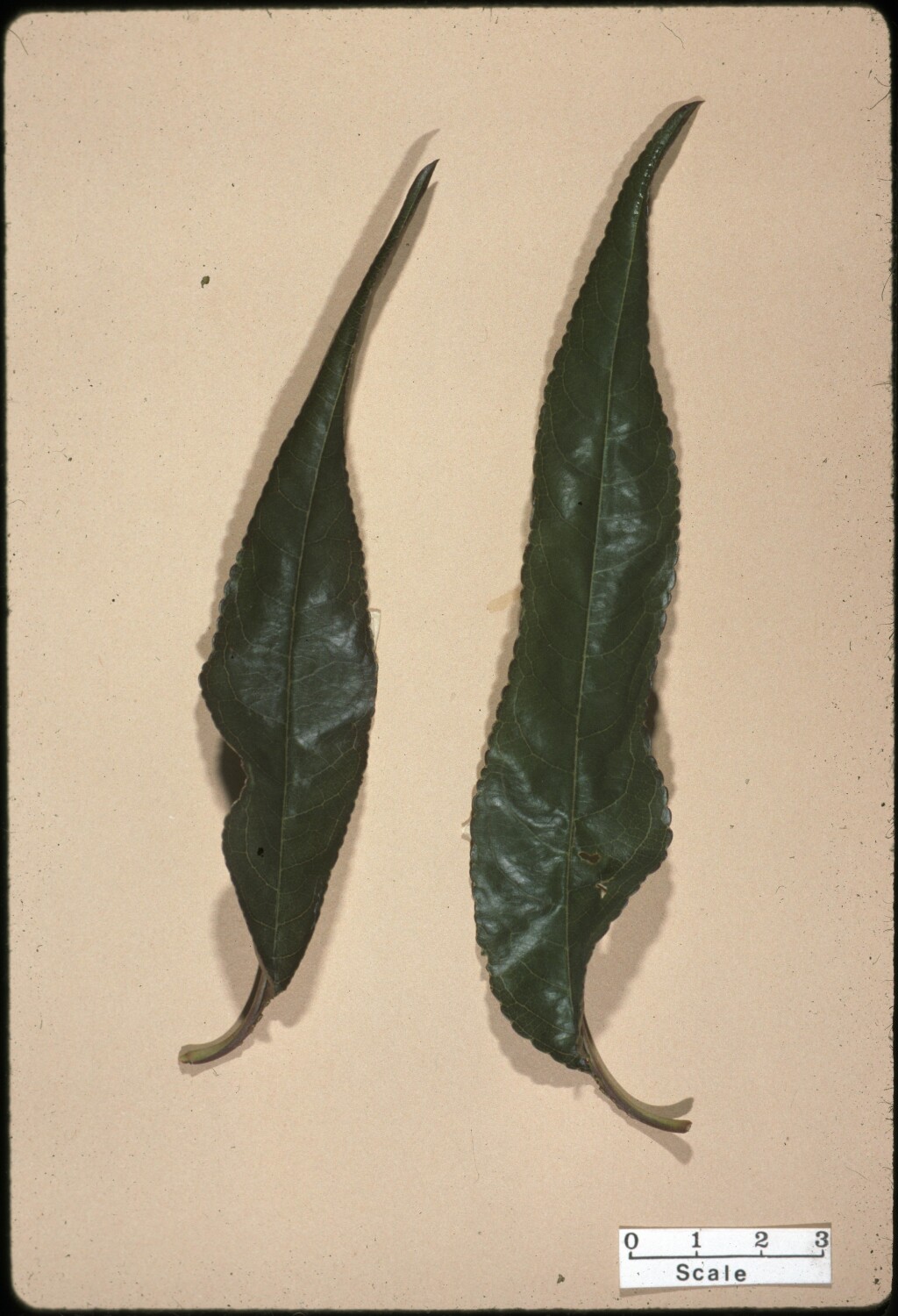Prunus
Mostly deciduous shrubs or small trees; juvenile phase often spiny. Leaves simple, alternate, entire or serrate, petiolate; stipules small, free, caducous. Inflorescence an umbel-like cluster or raceme, or flowers solitary, usually appearing in spring and preceding the leaves. Flowers bisexual, white or pink. Sepals 5, spreading; petals 5, spreading; stamens numerous; carpel solitary, immersed in hypanthium, free, walls stony in fruit, ovules 2 per carpel, becoming 1 by abortion. Fruit an ovoid or globose drupe, sometimes grooved on one side, fleshy and often edible, or dry and cracking at maturity, red, orange, yellow or nearly black; seed 1.
150–400 or more species (depending upon how the genus is defined), mainly from northern temperate regions; about 17 species in Australia (2 native).
Many species and cultivars are grown as ornamentals or for their edible fruits or seeds. The Almond (Prunus amygdalis Batsch), Apricot (P. armeniaca L.), Cherry (P. cerasus L.), Peach (P. persica (L.) Batsch) and Plum (mainly P. domestica L.) are commercially important plants throughout temperate parts of the world and all are grown in Victoria. Any of these species may occur near orchards or along roadsides, apparently from discarded stones or kernels, but can barely be regarded as naturalised in the State.
Jeanes, J.A.; Jobson, P.C. (1996). Rosaceae. In: Walsh, N.G.; Entwisle, T.J., Flora of Victoria Vol. 3, Dicotyledons Winteraceae to Myrtaceae, pp. 556–585. Inkata Press, Melbourne.
 Spinning
Spinning


